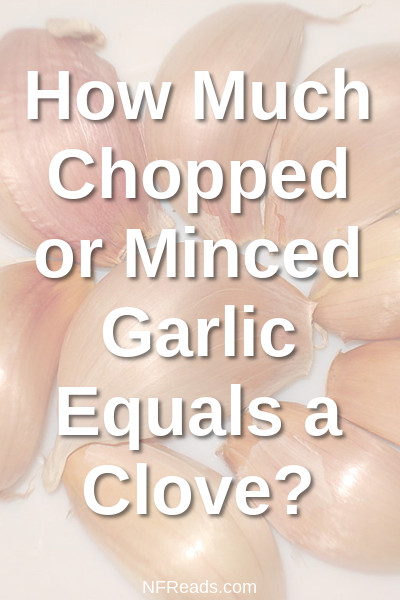
By the NFReads.com editorial team
The “quick and dirty” answer is that a medium-size clove of fresh garlic is around 5.75 grams or ~0.203 ounces (backed by science, more below) which is about 1 teaspoon or 1/3 tablespoon of minced/chopped (many commercial pre-minced ones list ~5g as one teaspoon) and 1/2 teaspoon or 1/6 tablespoon dried/powdered. We came up with this figure through our own calculations, and found that it is also supported by the Oregon State University College of Agricultural Science whose website states that there are 75-80 cloves per pound for Silverskin garlic (which is the cultivar that’s typically sold in stores).
There is so much conflicting information about this online that we turned to a 2006 scientific paper titled “Physical Attributes of Garlic (Allium sativum L.)” by Masoumi et al. published in the Journal of Agricultural Science and Technology (headquartered in Iran, which incidentally is in the region of the world where Allium sativum was likely first domesticated according to the Nobel Laureate-foreworded book Garlic and Other Alliums: The Lore and the Science written by Eric Block in 2010).
Four scientists took 75 cloves each of white and pink garlic and used lots of fancy equipment to analyze things like their dimensions, mass, volume, density and even things like “porosity” and “sphericity”. For the purposes of this article only the data from white ones was considered, and medium-sized cloves ranged from 4.05-4.27 grams (small and large ones were 1.04-1.34 grams and 6.04-6.46 grams respectively). However these samples had been modified so that their moisture levels were 42.4% – according to the USDA fresh garlic is 58.58% water, so we had to multiply 4.16 by 58.58 then divide by 42.4 to come up with 5.75g (rounded to 2 decimal places).
The long answer is that it depends on:
- Whether any added ingredients are involved as is common in store-bought products (this is the easy part) and
- What size clove you’re talking about (this is the hard part)
There are hundreds of varieties of Allium sativum, and even within a single variety there is usually a 5-fold difference (or more) between the masses of the largest and smallest cloves (and based on the paper mentioned above there is a similar number of small, medium and large ones so we’re not talking about outliers here). Expand the comparison to include all varieties, and we’re looking at a 100-fold difference. Plus don’t forget that extended storage will cause some moisture to evaporate and further affect size and weight.
Things get more complicated when you consider that different varieties have different flavors and intensity, and how it’s processed (chopped, crushed, dried and for how long) also affects its flavor.
It’s unfortunate that so many recipes use “cloves” as a unit of measurement seeing as how wildly inconsistent they are. Even teaspoon and tablespoon measurements can be enormously imprecise, not just because of different spoon sizes but also because a “heaped spoonful” can be more than twice as much as a “level spoonful”. At the very least, measurements in mass (ounces/grams) should be the standard used, though even this can’t help with variations in moisture and flavor.